Need to remove old or damaged chrome plating? Using the wrong method can easily etch, warp, or destroy the underlying part, turning a simple restoration into a costly failure.
To safely remove chrome plating, use controlled methods like chemical stripping with specific acids or mechanical abrasive blasting. The chosen method must be appropriate for the base metal to avoid damage.

In my years of CNC machining and metal finishing, I've seen the good and the bad of chrome plating. It creates a beautiful, hard surface, but sometimes, it needs to come off. For an engineer like David, who deals with high-value components, this is a critical moment. Removing chrome plating isn’t a simple cleanup—it’s a precision process. One wrong move can compromise the part's integrity. I’ve seen good components ruined by aggressive stripping that eats into the base metal. The key takeaway I want to share is this: to protect the base material, the removal method must match the part’s geometry, material, and tolerance requirements. It’s a careful operation that demands real expertise.
What Is Chrome Plating?
Before we talk about removing it, what exactly is chrome plating? What is this thin, shiny layer, and how is it applied to metal parts?
Chrome plating is an electrochemical surface treatment that deposits a thin layer of chromium onto a metal object. It is used to provide decoration, corrosion resistance, and increased surface hardness.
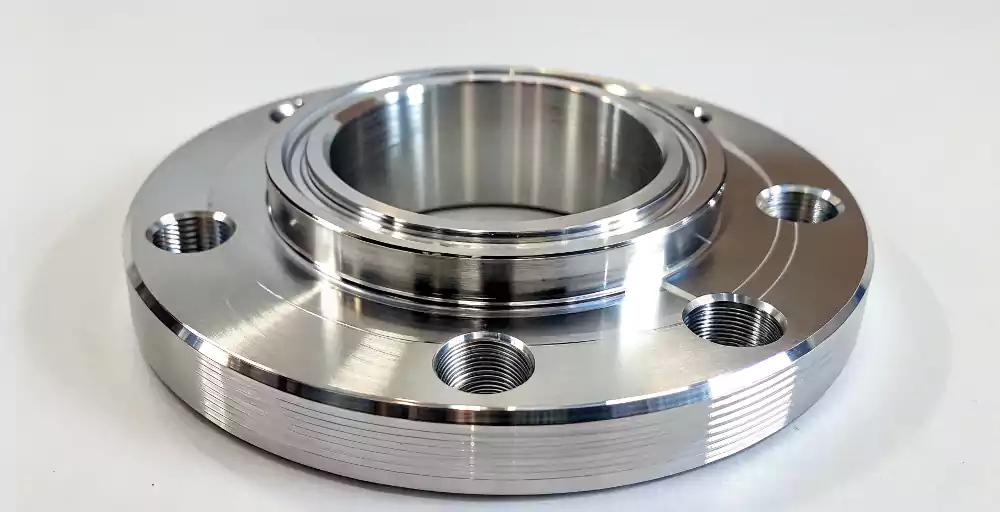
Why Chrome Is Used
Chrome plating is common in both decorative and industrial applications. I’ve worked with clients in automotive, aerospace, and tooling industries where chrome helps extend part life and reduce surface friction. It creates a hard surface, but it also adds a thin layer—sometimes too much for tight-tolerance CNC parts.
Composition and Bonding Mechanisms
Chrome plating isn't just surface paint. It's molecularly fused to the base metal through electrochemical deposition1. The bond strength varies by substrate preparation and plating type.
| Bond Type | Adhesion Strength | Risk During Removal |
|---|---|---|
| Mechanical Keying | Moderate | Medium |
| Intermetallic | High | Low |
| Diffusion Layer | Very High | Very Low |
Industrial hard chrome bonds strongest due to nickel undercoating. Decorative plating often skips this layer, making removal riskier. For aluminum substrates, zincate pretreatment creates vulnerable interfaces. When stripping, always consider the base metal's electrochemical properties—steel tolerates more aggressive chemicals than brass or copper alloys.
What Are the Types of Chrome Plating?
Is all chrome plating the same? What are the different types of chrome finishes, and how do their properties and applications differ?
The two main types of chrome plating are decorative chrome and hard chrome. Decorative chrome is a very thin layer for appearance, while hard chrome is a thick, industrial coating for wear resistance.
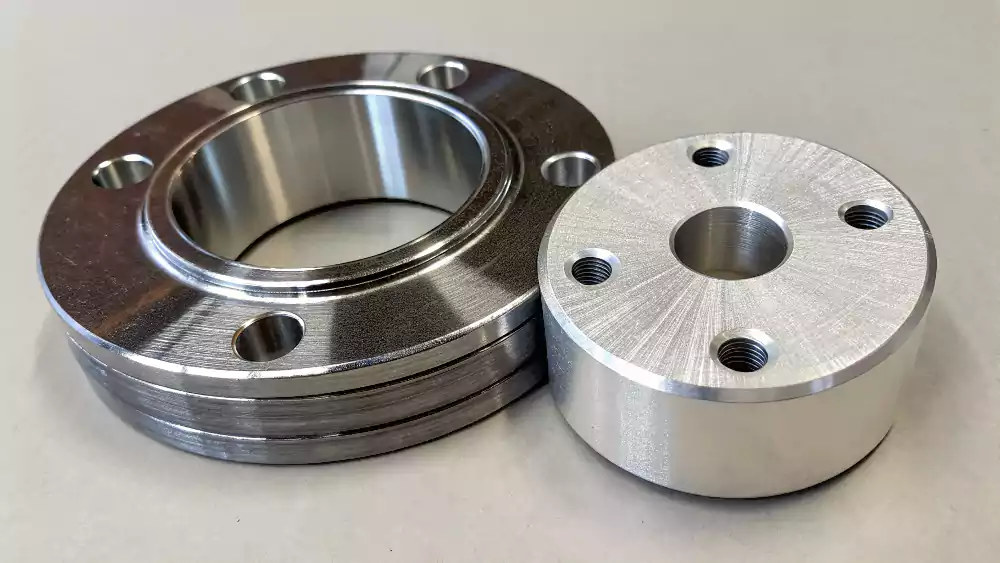
Removal Implications by Plating Category
Not all chrome layers respond to the same stripping techniques. Thickness and alloy composition dictate your approach.
Industrial Hard Chrome
Common in hydraulic cylinders and molds. Its extreme thickness demands reverse electroplating. Anodic dissolution in specialized baths (e.g., sodium hydroxide/cyanide solutions) peels layers without etching steel. Cycle times range from 15-90 minutes based on thickness.
Decorative Chrome
Thin layers on automotive trim or appliances. Chemical dips work best here. Mixed-acid solutions (sulfuric/hydrochloric) dissolve chrome in 2-5 minutes but attack brass or zinc substrates. Always add inhibitors like hexamine.
Nickel-Chrome Composites
Common in aerospace. The nickel underlayer requires two-stage removal: acid for chrome, then EDTA solution for nickel. Skip the second step and nickel residues cause galvanic corrosion.
We keep a plating database at Allied Metal. For unknown coatings, we run EDX analysis before stripping—saves thousands in rework costs.
How Does Chrome Plating Work?
What is the science behind this process? How does an electric current in a chemical bath cause a layer of metal to form on a part?
Chrome plating works through electrodeposition. An electric current is passed through a chromic acid solution, causing chromium ions to be drawn to and deposited onto the surface of the part, which acts as the cathode.
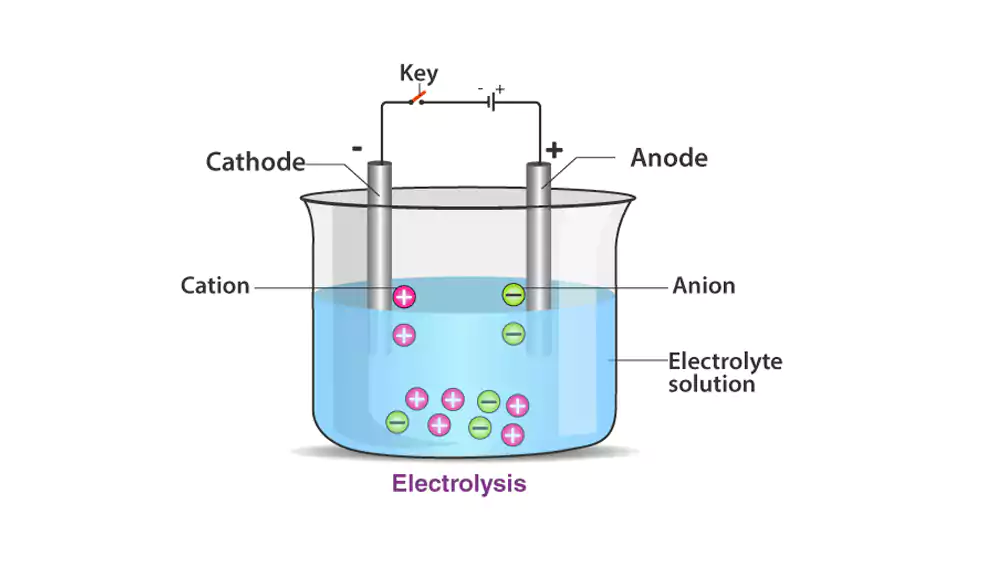
Diving Deeper into the Electroplating Principle
The process behind chrome plating is a fascinating application of electrochemistry. It's the same fundamental principle used for plating other metals like nickel, copper, or gold. For a technical professional like David, understanding this basic science is key.
Here is a breakdown of how it works:
-
The Electrolytic Cell2: The entire process takes place in a setup called an electrolytic cell. This consists of four main components:
- The Electrolyte: A solution containing dissolved metal ions. For chrome plating, this is typically a chromic acid bath.
- The Anode: A positive electrode, often made of lead or another inert material, which is connected to the positive terminal of a power source.
- The Cathode: A negative electrode, which is the part you want to plate. It is connected to the negative terminal of the power source.
- The Power Source: A rectifier that supplies a direct current (DC) to the system.
-
The Process of Electrodeposition3:
- The part (the cathode) and the anode are submerged in the chromic acid electrolyte.
- When the DC power is turned on, an electric current flows through the solution.
- This current causes the chromium ions (which are positively charged) in the solution to be attracted to the negatively charged part (the cathode).
- When the chromium ions reach the surface of the part, they gain electrons, causing them to return to their metallic state and deposit as a thin, tightly bonded layer on the surface.
The thickness of the chrome plating is controlled by the amount of current and the length of time the part remains in the plating bath. It's a precise, controlled process from start to finish.
What Process Is Used in Chrome Plating?
From a dirty part to a finished product, what are the key manufacturing steps? What is the typical workflow for a professional chrome plating operation?
The chrome plating process involves meticulous multi-stage cleaning and surface preparation, followed by one or more electroplating steps (like nickel and then chrome), and finally, thorough rinsing and drying.
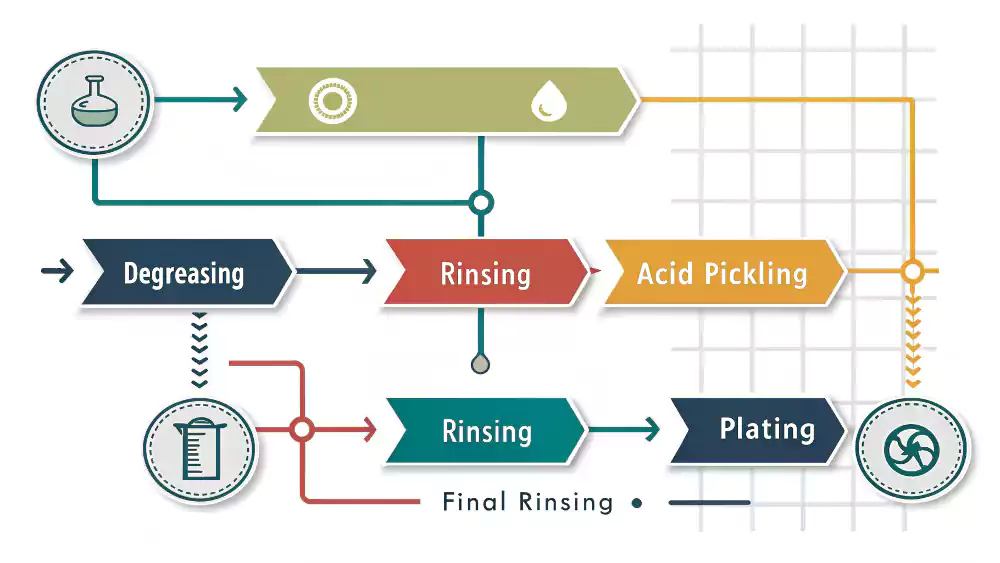
Diving Deeper into the Plating Workflow
A high-quality chrome finish is not just the result of the plating step itself; it is the outcome of a rigorous, multi-step process where surface preparation4 is absolutely critical. Any mistake in the early stages will show up in the final finish.
A professional plating process, whether for decorative or hard chrome, generally follows these stages:
-
Stripping (If Necessary): If the part is being re-plated, the first step is to completely strip off the old plating using a chemical process.
-
Degreasing and Cleaning:
- The part is thoroughly cleaned in a series of alkaline cleaning solutions to remove all oils, grease, dirt, and polishing compounds. This is one of the most important steps.
-
Rinsing: After each chemical step, the part is meticulously rinsed with clean water to prevent cross-contamination between the different chemical baths.
-
Surface Preparation (Acid Pickling):
- The part is then dipped in an acid bath (a process called pickling) to remove any rust, scale, or oxides from the surface. This also slightly etches the surface to ensure the subsequent plating layers will have a strong mechanical bond.
-
Electroplating Underlayers (for Decorative Chrome):
- For decorative chrome, the part is first plated with a layer of copper (sometimes) and then a thick layer of nickel. The nickel provides the reflectivity and corrosion resistance.
-
Chrome Plating:
- The part is moved to the chromic acid bath, where the final, thin layer of chromium is electroplated onto the surface.
-
Final Rinsing and Drying:
- After the final plating step, the part goes through another series of rinses to remove all plating solution residues. It is then carefully dried to prevent water spots.
This entire process is time-consuming and requires precise control over chemical concentrations, temperatures, and electrical currents to achieve a flawless finish.
Why Would You Want to Remove It?
If chrome is such a great finish, why would anyone ever need to take it off? What are the common reasons for stripping chrome plating from a metal part?
Chrome plating is removed to restore a part when the plating fails (peels, pits, or rusts), to change the part's finish, or to repair the underlying base metal.
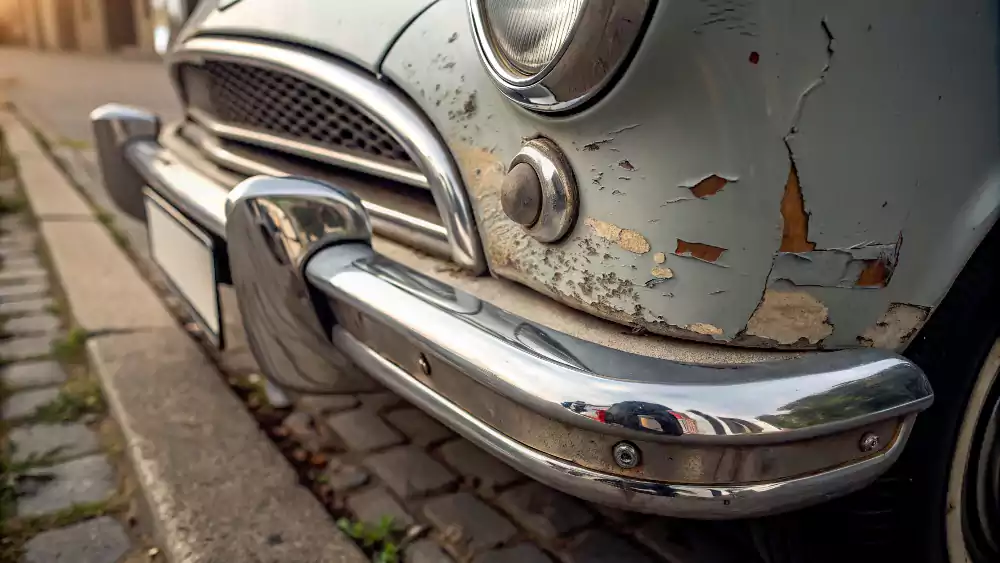
Why Chrome Plating Is Removed: Common and Practical Reasons
Although chrome plating is known for its durability and attractive finish, it isn't always permanent. There are several technical and aesthetic reasons why engineers, machinists, or restoration specialists may need to strip chrome from a component.
1. Plating Failure or Surface Defects
Over time, chrome plating can degrade due to environmental exposure, poor initial application, or physical damage.
- Pitting and Peeling: Moisture penetration through micro-cracks or pits can corrode the nickel or steel underneath, leading to blistering, flaking, and peeling.
- Rust and Corrosion: Once the chrome layer is compromised, underlying steel can rust, exacerbating damage to the plating.
- Cracks, Scratches, and Gouges: Deep physical damage may expose the base metal and accelerate corrosion or reduce aesthetics.
2. Tolerance or Fitment Issues
Chrome plating adds measurable thickness. On components with tight tolerances (e.g., shafts, housings, or precision tools), this can lead to interference fits or out-of-spec conditions.
- Dimensional Oversize: Parts may no longer fit as designed and need the chrome stripped to restore functionality.
3. Restoration or Rework
Whether restoring a classic car or refurbishing industrial equipment, old plating is usually removed before:
- Re-chroming: To restore a fresh, clean layer.
- Repairing the base part: Welding, dent removal, or other structural repairs require bare metal.
- Resizing or Machining: Chrome must be stripped for further machining or dimensional corrections.
4. Changing the Surface Finish
Sometimes the end goal is to update the appearance or performance of a component:
- Switching Finishes: Parts may be stripped to allow painting, powder coating, or a different metal finish (e.g., black nickel or gold).
Removing chrome properly ensures the component can be reused, repaired, or refinished with the desired properties. In many cases, it’s a cost-effective way to salvage valuable or high-tolerance parts that would otherwise be scrapped.
What are the Advantages and Disadvantages of Removing Chrome Plating?
Is it always a good idea to strip chrome? What are the potential benefits and risks that you need to consider before deciding to remove a chrome finish?
The main advantage of removing chrome is the ability to restore a part or apply a new finish. The disadvantages include the risk of damaging the base metal, cost, and safety hazards.
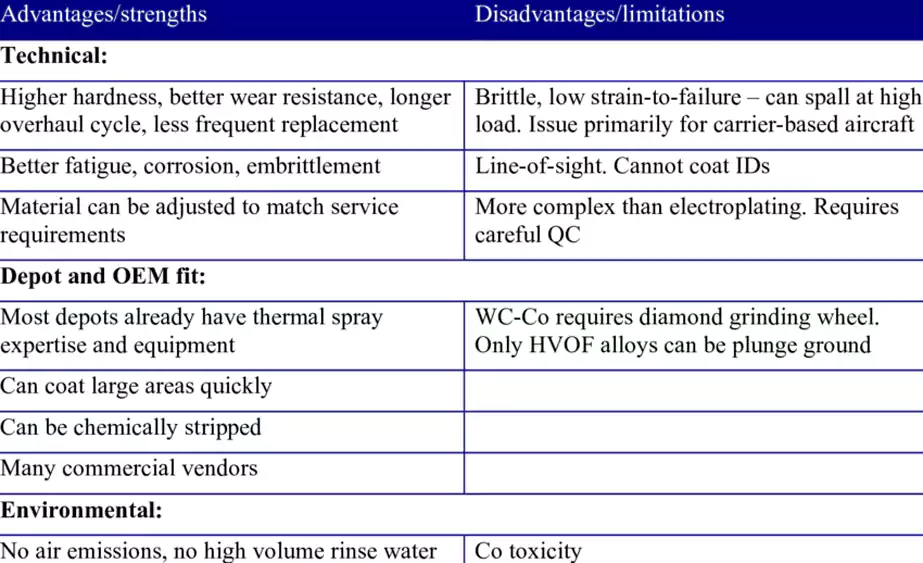
Decision Matrix by Material and Application
Use this guide to avoid point-of-no-return mistakes:
When Removal Works
- Low-carbon steel parts with thick plating
- Components needing weld repairs
- Batch processing of identical items
When to Avoid
- Thin-walled aluminum/copper alloys
- Case-hardened steels (risk of decarburization)
- Parts with internal stresses
Hydrogen embrittlement5 deserves special attention. High-strength steels (>150 ksi) absorb hydrogen during stripping, causing delayed fractures. We perform Rockwell C testing pre/post process. For critical applications, consider thermal desorption instead of chemical baths.
Disposal costs vary wildly. Acid solutions6 require pH neutralization and metal recovery systems. Our EPA-compliant system adds $15-50/kg to project costs—always factor this in.
Diving Deeper into the Pros and Cons
Deciding to remove chrome plating is a significant step that has both potential benefits and serious risks. For an engineer like David, a careful cost-benefit analysis is required.
| Advantages | Disadvantages |
|---|---|
| Enables Restoration: The biggest advantage is that it allows a damaged, peeling, or rusted part to be fully restored. Stripping is the essential first step to making an old part look new again. | Risk of Base Metal Damage: This is the biggest risk. If the wrong chemical is used, or if the process is not carefully controlled, the stripping process can etch, pit, or even dissolve the underlying steel, aluminum, or zinc. This can ruin the part, especially if it has critical dimensions. |
| Prepares Surface for New Coatings: It provides a perfectly clean, bare metal surface that is ready for re-plating, painting, or powder coating. A new coating will not adhere properly over old, damaged chrome. | High Cost: Professional chrome removal and re-plating is a labor-intensive and expensive process. For many non-critical parts, it can be cheaper to simply buy a new replacement part. |
| Allows for Base Metal Repair: You cannot weld or perform significant metalwork on a chrome-plated part. Removing the chrome allows for the underlying component to be repaired or modified. | Hazardous Materials: The chemicals used for stripping chrome (like muriatic acid or other strong reagents) are extremely hazardous and produce dangerous fumes. The process generates toxic waste that must be disposed of properly. This is not a simple DIY job. |
My experience has shown that for valuable or irreplaceable parts, the advantages of restoration often outweigh the costs and risks, but only if the removal is done by a professional. The risk of permanently damaging a good part by using an improper method is very high.
How to Remove Chrome Plating From Metal?
What are the actual methods used to strip chrome? What are the professional chemical and mechanical techniques for safely removing a chrome layer?
Chrome plating is professionally removed using chemical stripping in a muriatic or sulfuric acid bath. Abrasive blasting is an alternative mechanical method, but it can damage the surface if not done carefully.
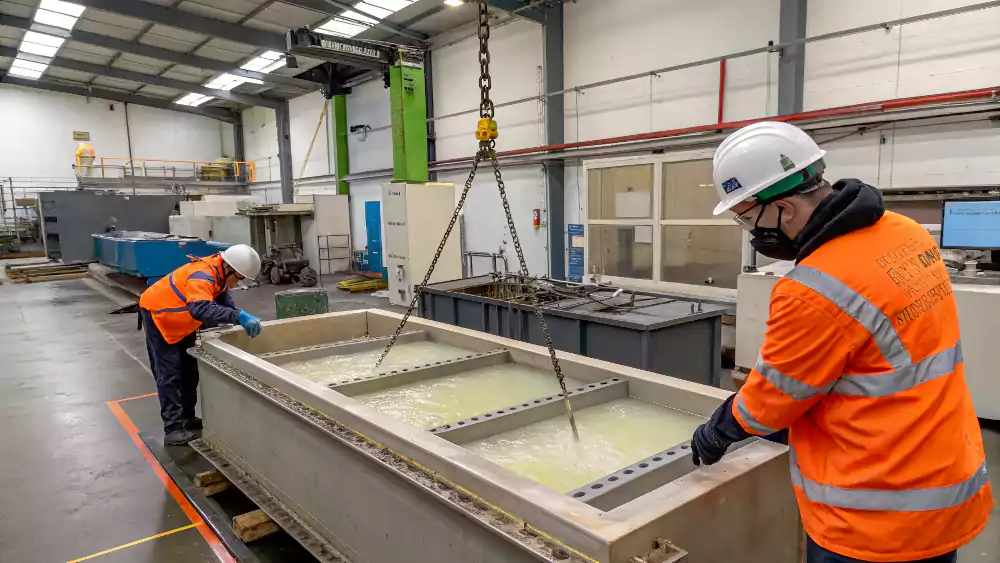
Diving Deeper into Removal Methods
There are several methods to remove chrome plating, but they vary greatly in their effectiveness, safety, and their effect on the base metal. For a precision component, choosing the right method is critical.
Important Safety Note: The methods described below, especially chemical stripping, are extremely dangerous. They involve hazardous acids and should only be performed by trained professionals in a controlled environment with proper personal protective equipment (PPE) and ventilation. This is not a DIY project.
1. Chemical Stripping (Reverse Electrolysis)
This is the most common and controlled industrial method. The part is submerged in a proprietary chemical bath, and a reverse electrical current is applied. This electrochemical process effectively lifts the chrome layer off the base metal without damaging it.
Best For: Complex geometries, high-tolerance parts, and achieving a perfectly clean surface for re-plating or inspection.
Considerations: Requires specialized equipment, strict safety protocols, and expert handling of chemical agents. This is a core service at Allied Metal, performed in a controlled environment.
2.Mechanical Removal (Abrasive Blasting)
This process uses a high-pressure stream of abrasive media (like sand, glass beads, or aluminum oxide) to physically blast the chrome plating off the surface. It is fast and effective but can be aggressive.
Best For: Robust parts where minor surface texturing is acceptable or desirable for creating a "key" for powder coating or paint.
Considerations: Can alter the surface profile and dimensions of the base metal. Not suitable for delicate parts or components with tight engineering tolerances.
3.Mechanical Grinding & Polishing
A more precise form of mechanical removal, this involves using grinding wheels, sanding belts, and polishing compounds to carefully abrade the chrome layer away. It offers more control than blasting.
Best For: Flat surfaces or simple cylindrical parts where specific areas need to be stripped. Good for weld preparation.
Considerations: Labor-intensive and can be difficult to perform evenly on complex shapes. Risk of heat generation and damaging the base metal if not done by a skilled technician.
4.Ultrasonic Cleaning
This method uses high-frequency sound waves (ultrasound) to create cavitation bubbles in a specialized chemical solution. The implosion of these bubbles generates intense energy on the part's surface, dislodging the chrome plating.
Best For: Highly delicate parts, intricate internal channels, and components that cannot withstand aggressive mechanical or chemical treatments.
Considerations: Often works best on thin chrome layers and is typically slower than other methods. Requires specific ultrasonic tanks and chemical solutions.
5.Laser Ablation
A high-technology method where a focused, high-intensity laser beam is scanned across the surface. The laser energy vaporizes the chrome plating layer by layer, leaving the underlying substrate untouched.
Best For: Selective removal on small, high-value components. Medical devices, aerospace parts, and applications requiring extreme precision.
Considerations: Very high equipment cost and slower processing time, making it expensive. Ideal for applications where no other method will suffice.
6.Acid Immersion (Wet Etching)
This involves simply submerging the part in a strong acid bath, such as hydrochloric or sulfuric acid, which chemically dissolves the chrome layer. It does not use an electrical current.
Best For: Bulk stripping of non-critical ferrous parts where speed is a priority and slight etching of the base metal is not a concern.
Considerations: Highly corrosive and can easily damage the base metal if the part is left in for too long. Generates hazardous fumes and waste. Requires expert supervision.
7.Thermal Decomposition
In this process, the chrome-plated part is heated in a controlled-atmosphere furnace to a temperature where the bond between the chrome and the base metal breaks down, causing the plating to flake off.
Best For: Specific metal combinations and parts that can withstand high temperatures without their metallurgical properties being compromised.
Considerations: Niche application. The high heat can warp or anneal the base part, altering its strength and dimensions. Not suitable for most precision components.
For any part that David would be concerned with, where tolerances and surface integrity are key, controlled chemical stripping by a professional plating shop is the only recommended method.
What Are Some Common FAQs About Removing Chrome?
What are some of the most common questions people have? Here are some quick answers to frequently asked questions about the chrome removal process.
Q1: What Dissolves Chrome Plating?
Chromic acid or hydrochloric acid solutions can dissolve chrome. These must be used with extreme care and proper ventilation.
Q2: Does Acetone Remove Chrome Plating?
No. Acetone can clean residue but does not affect electroplated chrome.
Q3: Will Brake Fluid Remove Chrome Plating?
Brake fluid does not remove chrome. It may affect painted coatings, but not metallic chrome.
Q4: Will Coca-Cola Remove Chrome Plating?
No. Despite the myth, Coke does not remove chrome. It’s too mild to affect the plating.
Q5: Can you remove chrome plating at home?
While there are many DIY methods described online, I strongly advise against it. The chemicals involved, primarily acids, are extremely dangerous. They can cause severe chemical burns, and the fumes can damage your respiratory system. Furthermore, the waste generated is toxic and cannot be simply poured down the drain. For safety and environmental reasons, this job should be left to a professional plating shop with the proper equipment and waste handling procedures.
Q6: Does removing chrome plating always damage the base metal?
If done correctly by a professional using the right chemical process, no. A controlled chemical strip is designed to dissolve the plating layers (chrome, nickel, copper) while having a minimal effect on the base steel, brass, or aluminum. However, if the wrong process is used, or if it's done improperly (e.g., aggressive abrasive blasting or using the wrong acid), then yes, it can very easily damage the base metal. This is the primary risk of an improper job.
Q7: Can you remove chrome plating from plastic?
Yes, but it requires a different chemical process. Chrome-plated plastic (common on modern car trim) uses a special process to plate metal onto a non-conductive surface. Stripping it requires a chemical solution that will dissolve the thin metal layers without melting or damaging the underlying plastic. This is a very specialized task.
Q8: How do you remove chrome from aluminum?
Removing chrome from aluminum is also a very delicate process. Aluminum is a reactive metal that is easily attacked and dissolved by many acids and alkalis. A specialized chemical stripper that is safe for aluminum must be used. Using the wrong chemical will quickly destroy the aluminum part. This is another reason why professional expertise is critical.
Conclusion
Removing chrome plating is a precision process essential for part restoration. To protect the base material, it requires a controlled chemical method best performed by experienced professionals.
If you’re dealing with a precision part and need professional help removing chrome plating, don’t risk it—contact a certified plating specialist or reach out to us for consultation.
-
Learn about the electrochemical deposition process to grasp its significance in creating strong metal bonds. ↩
-
Understanding electrolytic cells is crucial for grasping the electroplating process, making this resource invaluable for technical professionals. ↩
-
Exploring electrodeposition will deepen your knowledge of metal plating techniques, essential for anyone in the field. ↩
-
Understanding surface preparation is crucial for achieving a high-quality chrome finish, making this resource invaluable. ↩
-
Understanding hydrogen embrittlement is crucial for engineers to prevent delayed fractures in high-strength steels. ↩
-
Learn about safe disposal methods for acid solutions to ensure compliance and environmental safety. ↩


I went over this site and I think you have a lot of good information, bookmarked (:.
Youwin on Facebook? Hmm, usually a red flag with these casino sites. Better double check their licensing before you throw any money at ’em. Just sayin’. youwincasinofacebook